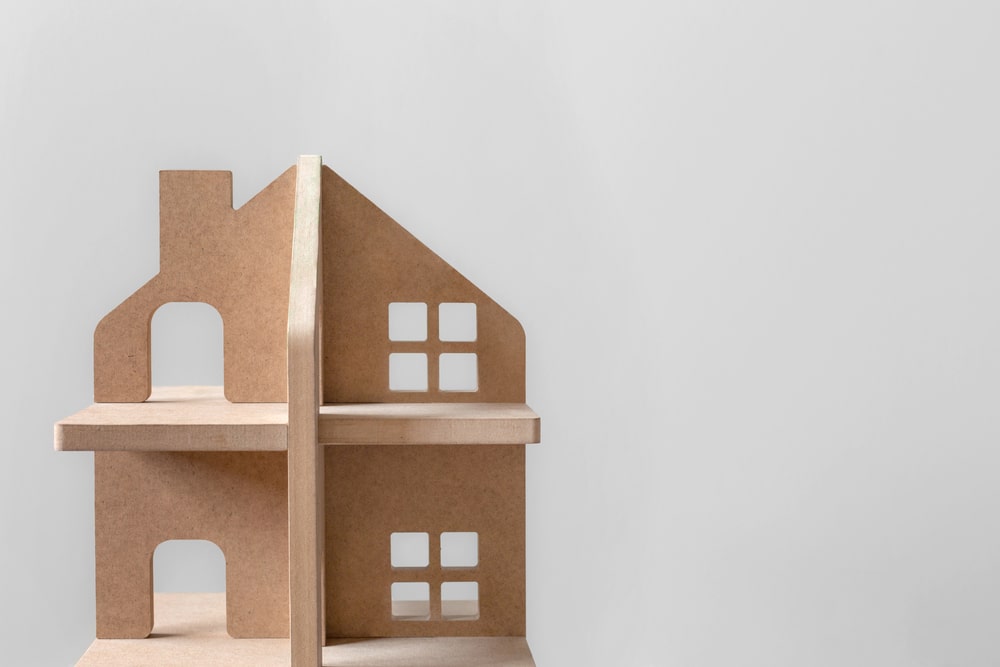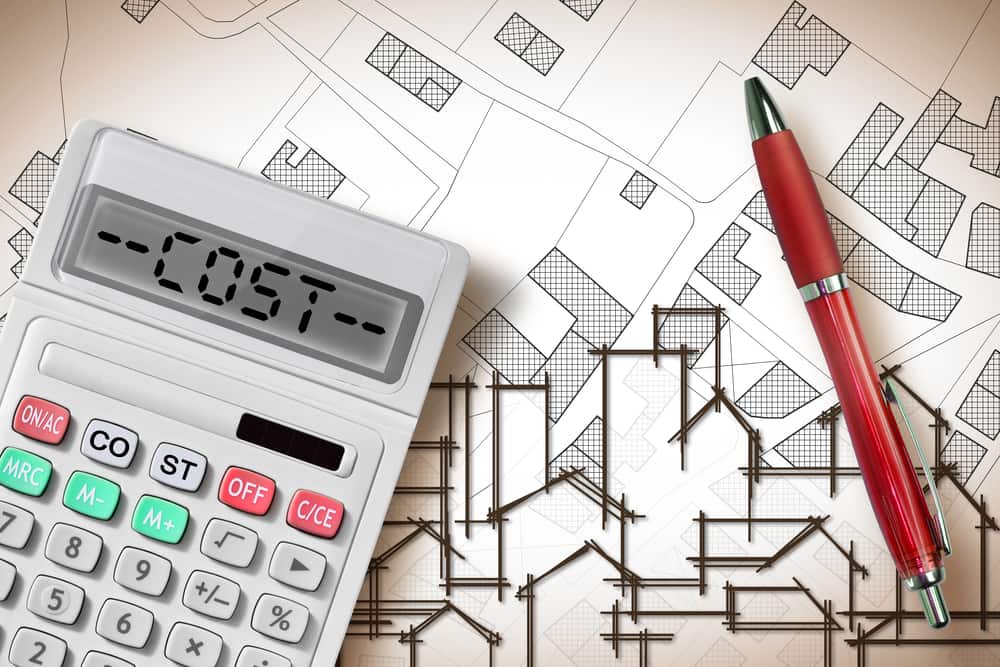How To Buy A Yacht With No Money
Key Takeaways
-
How to buy multifamily property
-
Best multifamily home loans
-
Multifamily property pros and cons
Chances are, if you've been exposed to the real estate investing trade for a while, you've started to think about multifamily investing. If so, you've probably heard about the numerous benefits available: More cash flow, easier management, substantial tax breaks. But if you're low on funds, you might be wondering how to buy a multifamily property with no money. Perhaps you've assumed that multifamily property investing is beyond your reach if you don't have vast reserves of cash.
And while it's true many real estate investing deals, and that includes those attached to a multifamily investment property, will be deprived of vital cash flow if there isn't a suitable down payment placed, this doesn't mean if you're strapped on the down payment side you can't buy multifamily real estate.
In fact, by being creative with your financing options, you might find that the initial lesson in your "Multifamily Investing for Beginners" class is a profitable one. Here are seven strategies for how to finance a multifamily property with little or no money down to guide you in this endeavor.
Note: As with any financial transaction, it's vital to do your due diligence and consult with a financial professional to ensure a particular strategy works for your needs, such as executing a multifamily rehab property. The information provided here is intended for educational purposes only.
[ Do you want to own rental real estate? Attend our FREE online real estate class to learn how to invest in rental properties and maximize your cash flow. ]

8 Ways To Buy Multifamily Property With No Money Down
Multifamily properties can come attached with a hefty purchase price, causing some investors to shy away. However, when managed properly, these types of properties present an opportunity to earn a significant amount of cash flow and offer substantial returns. The purchase price need not present a barrier to entry; there are several ways to invest in multifamily properties for those who don't have a ton of cash, including the methods below:
-
Private Money
-
Equity Shares
-
Material Sales
-
Hard Money
-
Repair Allowance
-
House Hacking
-
Real Estate Crowdfunding
-
Seller Financing
1. Private Money
Private money lenders aren't just useful when acquiring single-family homes. Private lenders can be especially useful on the multifamily side of things, such as investing in multifamily apartments, and can be a great way to move forward on a development project if you don't currently have the funds for a down payment.
Just as with single-family properties, private lenders don't have to be connected to an investment firm. Some of the best private money lenders out there for you can be found within your existing social network. This includes family, friends, doctors, colleagues, etc.
Why would somebody in your network give you money? The prospect of a better return than many are getting from their retirement account – and backed with real estate – can make this a compelling case for those who reach out to you (and can help you come up with the funds needed for a multifamily property down payment.)
2. Equity Shares
Finding an equity share investor is slightly different than working with a private money lender. With a private lender, you promise a regular return for your investor. But with an equity share investor, you are giving them a portion of the equity of a property in exchange for the funds needed for a down payment in buying multifamily real estate.
For example, let's say an equity share investor gives you $100,000 to contribute toward a multifamily property. You might then, in exchange, give the investor a 40 percent share of the equity of the property. This would allow your investor to receive both 40 percent of the monthly cash flow from the property as well as 40 percent of the proceeds from the eventual sale of the property.
This is a powerful strategy for the very reason that equity is attractive to investors. And this method gives investors both a chance to generate short-term and long-term cash flow, something you can use to motivate would-be investors in your down payment quest.
3. Material Sales
This isn't always possible for every multifamily property project. Still, there are occasions when a property may contain valuable natural (or manufactured) resources that can be sold, upon purchase of a property, to help generate a down payment.
Material examples would include dirt, plants, gravel, timber, and fertilizer, any resource that may prove valuable to another party. It's all about seeing past the perceived value of a multifamily property and determining whether there are hidden opportunities that can make the deal much more realistic and palatable for you.
4. Hard Money
In case you're not familiar with the term, hard money lenders (HMLs) can be described as private individuals or small organizations that lend "hard money" to a borrower based on the value of a property, not the borrower's credit score.
Even though a hard money loan's interest rate and origination fees are much higher than a traditional mortgage loan, it's not called "hard money" because of its onerous terms. Still, because hard money is all about math. Does the property's loan-to-value ratio (LTV) — ideally 65% or lower — meet the criteria set by the hard money lender?
If it does, you have a good chance of striking a deal, especially if you've done your homework and found a multifamily property that has all the earmarks of a steady source of cash flow. If not, it's time for you to keep searching.
5. Repair Allowance
Investors often overlook this strategy, but it can be a powerful way to generate your multifamily property down payment funds. It works this way: When you inspect a multifamily property, you'll make a list of what repairs need to be done before the purchase occurs. And then that money, granted the seller agrees to the transaction, will be given back to you at closing.
Then you have two choices:
-
You do the repairs yourself. Not an ideal solution, but if you have the expertise and time, this can be effective.
-
A better solution is to already have a team of contractors and/or home repair professionals who (or your partner) have worked with in the past to handle the repairs.
Because you've given them steady work in the past or will do so in the future, you can often get a discount on the repair's labor and material costs, which is money you can put toward your down payment.
6. House Hacking
House hacking refers to renting out part of a property that you currently live in. You can essentially list a spare bedroom, loft, or shared space online as a short-term rental. The most common way to do this is by using Airbnb. Price your rental according to similar listings in the area, and watch your cash flow increase as guests rent out your space.
Both homeowners and renters can utilize this strategy if lease agreements and local ordinances allow. Research the laws on short-term rentals in your area and learn what kind (if any) permits you to need to get started. In many popular tourist destinations licensing is required to list your property. After you are free to get started, think about how you can attract guests to your listing. Set up the room, take clear pictures, and list any amenities that come with it. Your room does not have to be over the top, but the better your listing is, the more you will be able to charge visitors.
All in all, this underutilized strategy can be a great way to supplement your income and increase your financial reserves. In a few short months, you could even have enough to make a down payment for a multi-family property.
7. Real Estate Crowdfunding
Instead of raising financing from one lender, consider using crowdfunding as a way to buy a multifamily property. Crowdfunding is a way to raise money by asking a pool of investors for small amounts of capital rather than one big investment. This strategy was made popular by websites like GoFundMe and Kickstarter, which allow users to crowdfund any project easily.
You don't need any capital to start crowdfunding; however, you need a reliable network and a strong pitch. Lenders are more likely to be interested in your project's success, so you need to be prepared to convince them how it will work. It may require some serious dedication, but the good news is that investors will be more inclined to refer you to others and support your future projects after the success of your property.
8. Seller Financing
Seller financing is another method commonly associated with single-family real estate, but it can also be applied to multifamily properties. Seller financing is the process of making payments directly to the seller to ultimately buy the property. These transactions can work similarly to traditional loans, with the seller acting as the "bank," or they can be operated as lease-to-own deals.
The benefits of seller financing are that you can cut out the middleman in the transaction and negotiate loan terms directly with the property owner. The drawbacks are that these deals can be somewhat rare, and the interest rate may be higher than other financing methods.
That being said, seller financing is still a reliable option when financing real estate. These situations are most common when owners want to sell a property quickly, for example, if it was recently inherited. Remember to follow all of the necessary steps to get your contract down in writing and formalize the financing process.

Best Multifamily Home Loans
There are several types of loans for multifamily properties available on the market for those researching ways to finance their purchase with a loan. The interest rates on the following loans typically range between 4.5 and 12 percent and can be appropriate for investors looking to refinance their properties as well:
-
Conventional Multifamily Mortgage: Most traditional lenders offer loans large enough to finance multifamily properties, usually for those between two and four units. (Anything larger would qualify as a commercial property.) Conventional mortgages are great for investors who desire a longer-term loan and can make a 20 percent down payment.
-
Federal Financing: Multiple government agencies, such as the Federal Housing Administration (FHA), Fannie Mae, and Freddie Mac, sponsor multifamily loan programs. These loans are great for investors who do not have much for a down payment and are willing to live in one of the units.
-
Portfolio Loan: Portfolio loans are loans that can be used to purchase multiple properties at once. These long-term loans are right for investors who want to purchase up to 10 properties at once.
-
Short-term Financing: Some investors might need a short-term loan, such as a hard money loan or bridge loan, for flexibility. For example, an investor may want to act quickly on a deal and finance it in the short-term until they can renovate it or increase occupancy to meet longer-term loan requirements. Short-term financing is typically associated with higher interest rates.
Pros Of Buying Multifamily Properties
Before deciding to add a multifamily property to your investment portfolio, you should take the time to weigh the pros and cons to decide if it is right for you. There are many benefits to investing in a multifamily property that attracts investors to pursue these opportunities.
-
Recurring Income: The recurring monthly income that a multifamily property can produce is one of the most prominent benefits of this investment. Financially sound deals have the potential to offset your monthly expenses and put cash in your wallet every month.
-
Income Diversity: A vacancy in a single home property will result in a loss of income for that time period. However, if one unit is unoccupied in a multifamily property, the other units will continue to generate income, helping alleviate the vacancy cost.
-
Low Maintenance: Many maintenance repairs such as roofing or central heating can be made to all units in a multifamily property at once. This will help to save you time and money on supplies and labor.
-
Multiple Income Sources: In larger multifamily properties, investors have opportunities to generate more sources of income on site. You can charge tenants additional fees for parking or garage spaces or install coin-operated laundry facilities that will provide income in addition to the monthly rent.
-
Performance-Based Financing: Financing for multifamily properties is based on the performance of the property, not your personal financial situation. This can benefit you if you are looking to invest in real estate but do not have a great credit score.
[ Ready to take the next step in your real estate education? Learn how to get started in real estate investing by attending our FREE online real estate class. ]
Cons Of Buying Multifamily Properties
Although there are many benefits of buying and owning multifamily property, doing so can be more complex than single home investments, so it is important to understand the challenges you may face.
-
Management: Managing a multifamily property can be time consuming, especially if there are more than 4 units in the property. Many investors hire on-site property managers or a property management company instead of taking on the task themselves. Still, both of these options will come with additional costs.
-
Higher Turnover: On average, multifamily property tenants occupy a unit for about 2 years or less, compared to the 5 to 7-year occupancy of the average single home tenant. Be sure to take the marketing costs necessary to attract new tenants due to the higher turnover of multifamily tenants.
-
Tenants Neglect Property: The normal wear and tear of multifamily properties tend to be greater than single-family properties, so investors should be prepared to make more repairs between each tenant's occupancy.
-
High Cost Of Maintenance: When major issues arise in a multifamily property, multiple units will be affected, resulting in more expensive maintenance repairs. If issues such as heating system failures or plumbing issues occur, it will cost more to repair multiple units than it would cost to repair a single-family home, so investors should be prepared for these expenses if they ever are to occur.
Summary
Whether investing in a multifamily property is right for you will require investors to think creatively about your obstacles and strategize how to buy a multifamily property with no money in a way that works for you. By reaching out to your network, exploring hard money options—even calculating the resale value of timber—you might find avenues for multifamily investing you never thought possible. Of course, there are benefits and drawbacks to any investing strategy. Still, if investors are fully aware of what lies ahead of them, they are much more likely to succeed with multifamily property investments.
Is a lack of funds keeping you from investing in real estate? Don't let it!
One of the obstacles many new investors face is finding funding for their real estate deals. Our new online real estate class, hosted by expert investor Than Merrill, is designed to help you get started learning about the many financing options available for investors, as well as today's most profitable real estate investing strategies.
Register for our FREE 1-Day Real Estate Webinar and get started learning how to invest in today's real estate market!


How To Buy A Yacht With No Money
Source: https://www.fortunebuilders.com/finance-a-multifamily-property/
Posted by: smithlikeemence.blogspot.com

0 Response to "How To Buy A Yacht With No Money"
Post a Comment